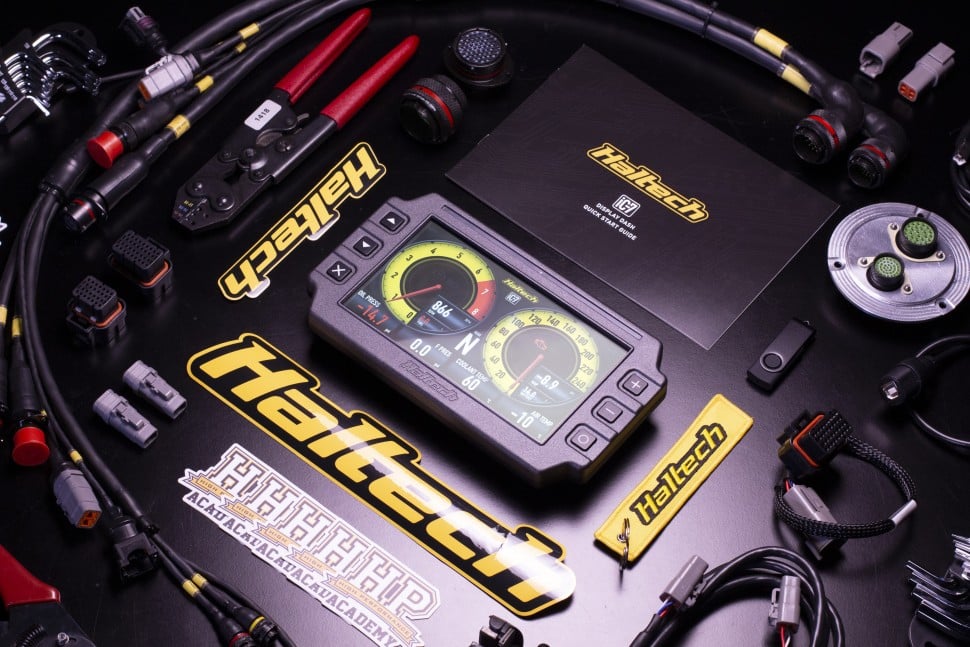| 00:00 |
The rear diffuser on a car is the section where the floor starts to ramp up at the rear, and its primary purpose is to generate local downforce and improve extraction of air from the floor, thus making more downforce across the entire floor.
|
| 00:13 |
It functions much like the front diffuser, just on a bigger scale, and with less clean airflow feeding it.
|
| 00:19 |
As with all the other aero devices here, the priority again is to keep it simple.
|
| 00:24 |
We want to have a kickline, much like the front diffuser, with around a 100mm radius.
|
| 00:30 |
Tighter than this and we risk premature flow separation.
|
| 00:33 |
We definitely don't want sharp changes in direction at the front of our diffuser.
|
| 00:38 |
With the rear diffuser, the trick is to try and get this kick as far forwards as we can.
|
| 00:42 |
The further forwards we can get that diffuser expanding, the less we have to deal with the dirty air off the rear wheels entering the diffuser.
|
| 00:50 |
If our floor naturally sits lower than the differential suspension, we can use this to our advantage to start the kick earlier.
|
| 00:58 |
Similarly, for front wheel drive cars or cars with torsion beam suspension, there should be plenty of volume to get the kick going very early.
|
| 01:06 |
Much like the front diffuser, we should target a ramp angle of around 10-12 degrees.
|
| 01:12 |
More often than not, I find clients end up settling on 12 degrees and the performance is generally good.
|
| 01:18 |
So, if we imagine we have a 12 degree defined ramp angle and we have a clearance height like a differential, subframe or suspension, this defines the position of the roof of our diffuser.
|
| 01:29 |
Typically, we don't actually want to extend our diffuser too far rearwards, as it means that the suction generated by the rear wing can't effectively propagate down to it.
|
| 01:38 |
I only extend rear diffusers about 50mm behind the rear bumper, even if the rules allow me to go further.
|
| 01:45 |
To finish off the end of a diffuser, I give it a small 100mm radius end kick which gives it a final upwash to help with the last bit of diffuser expansion at the back of the car.
|
| 01:55 |
Looking at the planform, we normally want to give a little bit of gap to the tyre, typically around 50-100mm as we don't want to sit right on it.
|
| 02:05 |
Like with the floor, the reason for this is so that we don't drag the dirty air from the tyre straight into the diffuser.
|
| 02:11 |
We want the start of the diffuser to be pretty much aligned with the X direction if we're only starting around the tyre, which is where most club level cars will start their diffusers.
|
| 02:19 |
As we go rearwards, we can start to flare it out with a small amount of lateral expansion over the diffuser, around 50mm.
|
| 02:27 |
This will help with the expansion at the end of the diffuser, however it's by no means necessary to have a potent diffuser, and if we want something easy to manufacture, we can easily work very well with a fully straight sidewall.
|
| 02:40 |
If our diffuser kick starts further forwards than the rear tyre, we'll generally have to flare the start out more to compensate for the inwash resulting in front of the diffuser, however this situation is less common on club cars.
|
| 02:53 |
It can improve diffuser performance to have a set of full height diffuser strakes spaced about a quarter of the diffuser width in.
|
| 03:01 |
This again helps with the dirty air from the tyres.
|
| 03:04 |
Strakes for clarity are simply long, narrow vertical surfaces used to manipulate airflow and are seen on nearly all types of diffusers.
|
| 03:13 |
On the bottom of the diffuser sidewall, it can be helpful to have a small horizontal footplate to just capture a little bit of the pressure on the outboard sidewall, and it helps stop the dirty air of the tyre making its way into the rear of the diffuser.
|
| 03:26 |
This isn't a mandatory detail, but it can be helpful.
|
| 03:30 |
This brings us to the end of this section of the course covering different aerodynamic devices available to the club level racer, so let's recap this last module before finishing up.
|
| 03:38 |
The rear diffuser's main purpose is to generate downforce and improve airflow extraction from the car's floor, enhancing overall downforce across the underbody.
|
| 03:48 |
It should have a kickline with a radius around 100mm, starting as far forward as possible to avoid dirty air from the rear wheels.
|
| 03:56 |
A ramp angle of 10-12 degrees is optimal, with the diffuser extending only about 50mm past the rear bumper to allow suction from the rear wing to reach it.
|
| 04:05 |
For effective performance, it's important to leave a small gap between the diffuser and the tyres to avoid pulling in dirty air.
|





